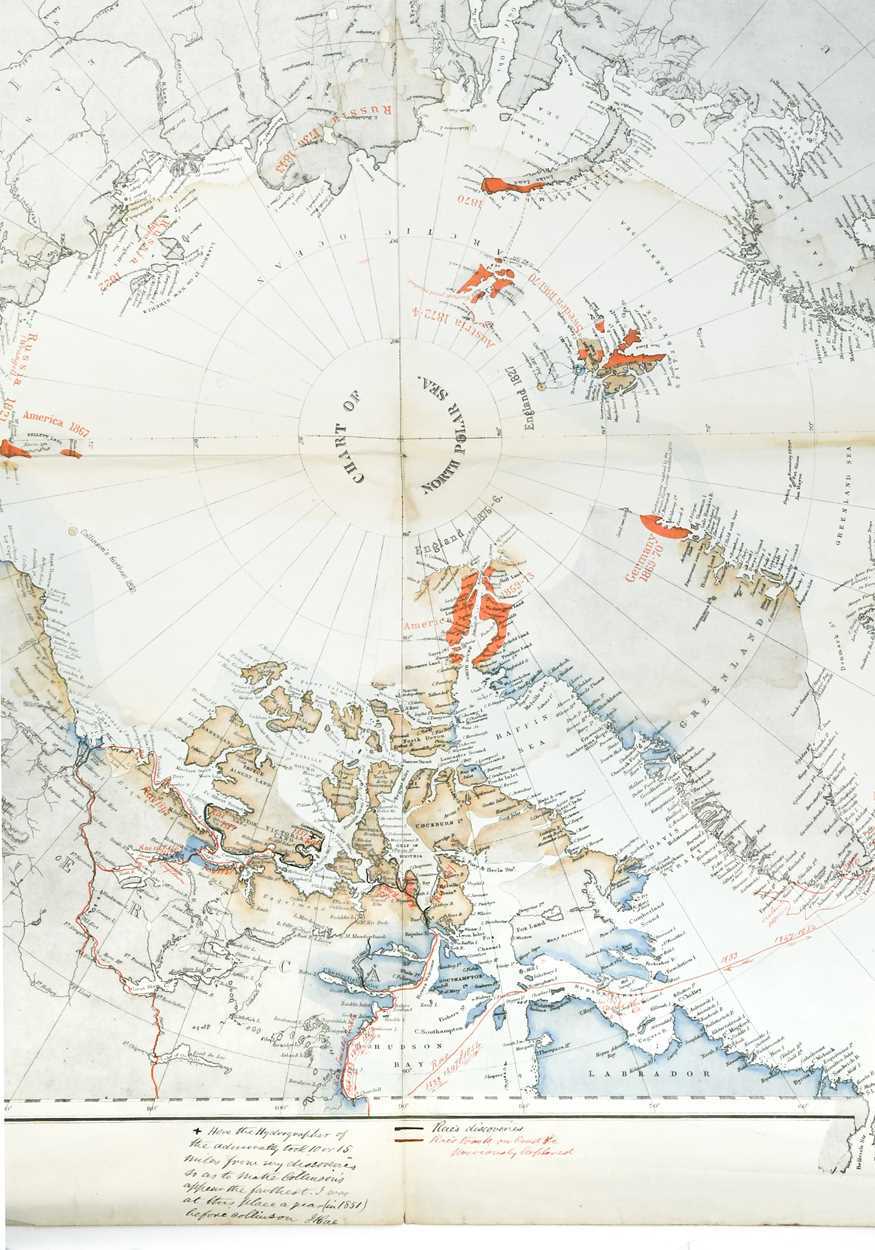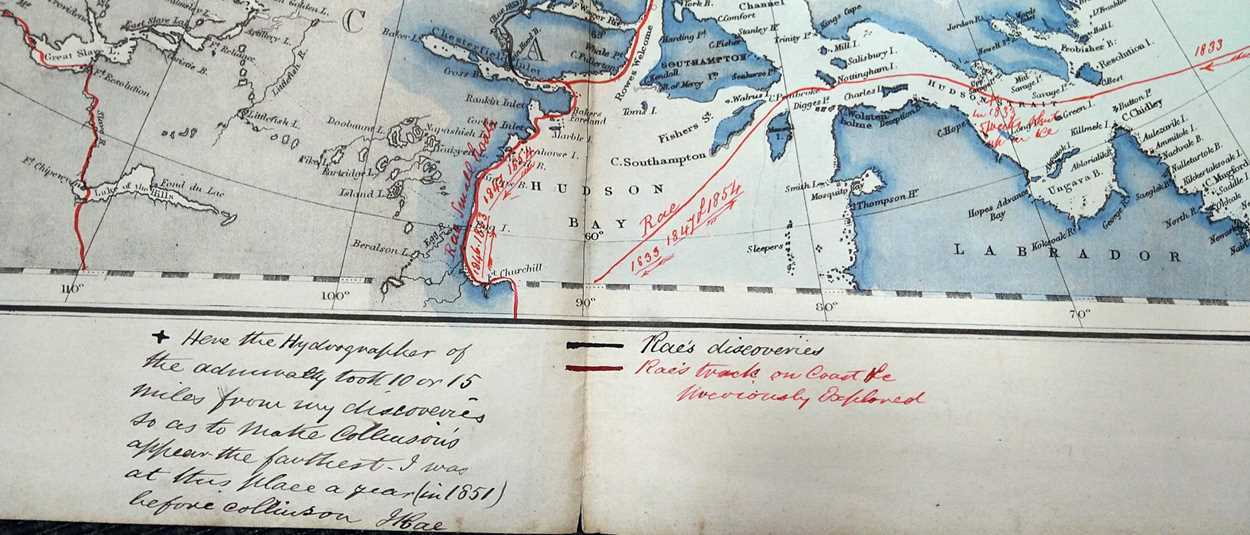CAMBRIDGE, UK – The commercial fortunes of a 19th-century map of the Arctic offered by Cheffins on March 4 were boosted greatly by its annotations. Notes in red and black ink to this Malby & Sons Chart of the North Polar Sea were made by the Scottish explorer and surgeon John Rae (1813-1893), the man who discovered the fate of the lost Franklin expedition. Full results for the sale can be seen at LiveAuctioneers.
The map came by descent from the family of the Victorian Member of Parliament Albert Pell (1820-1907). While family records do not tell of a meeting between Pell and Rae, both worked with the Hudson Bay Company’s Office in the 1870s.
Rae completed four Arctic exploration voyages, mapping much of the Arctic coastlines on foot or by boat. The Rae Strait at King William Land – the final piece of the jigsaw in discovering a Northwest Passage – is named after him. Second in command of Sir John Richardson’s party sent to search for Franklin, he returned with artifacts including a small silver plate engraved ‘Sir John Franklin, KCH’ and the information that close to 30 corpses had been found. Rae made two reports on his findings: one for the public, which omitted any mention of cannibalism, and another for the Admiralty, which included it. However, the latter was leaked to the press, and caused great outcry in Victorian society, not least with Franklin’s widow, Lady Franklin, who refused to accept the news and campaigned against Rae.
Cheffins’ lithographic map was originally found inserted into an 1848 copy of A. Keith Johnson’s The Physical Atlas illustrating the Geographical Distribution of Natural Phaenomena. Rae marked his personal discoveries in black ink with other ‘track on coast or previously explored’ routes indicated in red. He added a marginal note stating: ‘Here the hydrographer of the Admiralty took 10 or 15 miles from my discoveries so as to make Collinson’s appear the farthest. I was at this place a year (in 1851) before Collinson. J Rae’.
In Cambridge on April 4, the annotated map was estimated at £400-£800 ($505-$1,010) but took £8,000 ($10,100, or $12,625 with buyer’s premium) from a bidder using the LiveAuctioneers platform. The Victorian atlas in which it was stored was offered separately, selling for £150 ($190, or $235 with buyer’s premium).

Malby & Sons Chart of the North Polar Sea annotated by Scottish explorer John Rae, which sold for £8,000 ($10,100, or $12,625 with buyer's premium) at Cheffins on April 4.

Detail of the Chart of the North Polar Sea annotated by Scottish explorer John Rae, which sold for £8,000 ($10,100, or $12,625 with buyer's premium) at Cheffins on April 4.

